This bulletin is being issued to revise Fuel System Diagnosis-High Pressure
Side (formerly known as Fuel Return System Volume Test) in the Engine Controls-6.6L
sub-section of the Service Manual. Please replace the current information
in the Service Manual with the following information.
The following information has been updated within SI. If you are using
a paper version of this Service Manual, please make a reference to this bulletin
on the affected page.
- Were you referred here from one of the following diagnostics?
| • | Surges/Chuggles in Symptoms |
| • | Rough, Unstable, or Incorrect Idle in Symptoms |
| • | Fuel Injector Balance Test with Tech 2 |
| - | If you answered Yes, go to the Fuel Pressure Regulator Graphing
after step 38. |
| - | If you answered No, go to Step 2. |
- Remove the air duct from the air cleaner assembly and the turbo
inlet.
- Remove the air intake pipe. Refer to Air Intake Pipe Replacement.

- Remove the fuel injection pump fuel
return rubber hose from the junction block (2). Cap the fitting on the block
with a 3/8 inch rubber cap (1) to prevent fuel leakage.
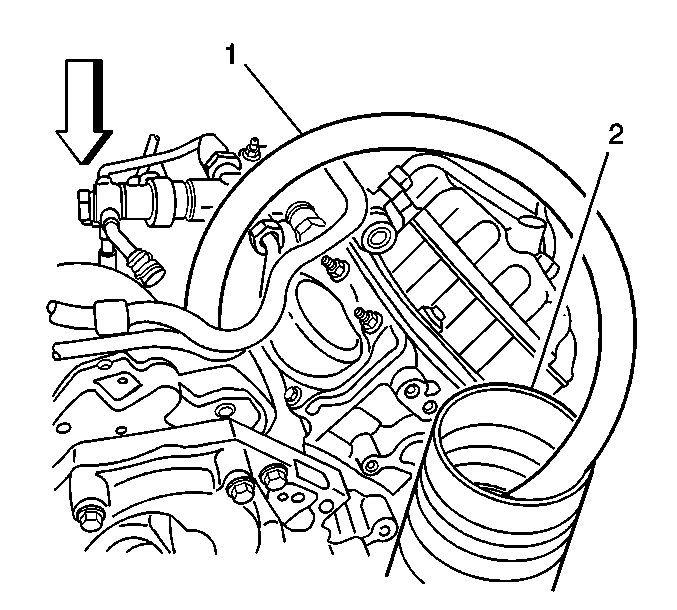
- Attach a rubber hose (1) with
a barbed fitting to the fuel injection pump return hose and insert the other
end into a 3.79L (1 gallon) clean fuel container (2).
- Remove the retaining clip from the fuel return line.
- Using the J 44581 Fuel Line Disconnect Tool, disconnect
the fuel return line from the fuel junction block. Refer to Quick Connect
Fittings Service (Metal Collar).
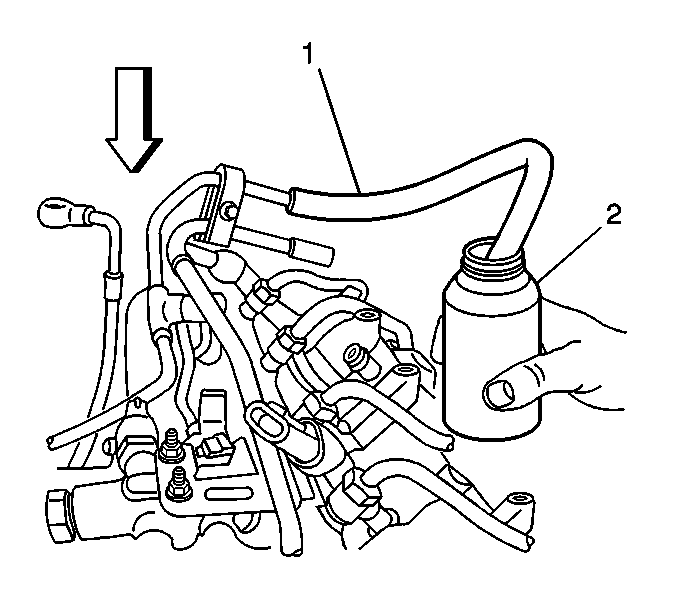
- Connect a 10 mm (3/8 in)
hose (1) on the fuel return fitting and place the other end of the
hose into a 100 ml (3.38 oz) container (2) for measuring
liquids.
- Remove the ignition 1 relay using the J 43244
Relay Puller Pliers.
- Crank the engine in 15 second intervals, with one minute
cooling time between, until fuel starts to flow into the measurement container.

- Elevate the hose to retain fuel in the
hose, and empty the measurement container (2) into a suitable fuel
container. Install the hose in the measurement container.
Important: The engine cranking speed must be more than 150 RPM.
- Crank the engine for 15 seconds.
Important: Do not include the fuel from the fuel injection pump return hose in
the measurement procedure.
- Measure the quantity of fuel in the container.
| • | If there is more than 35 ml (1.2 oz) in the measurement
container, go to step 19. |
| • | If there is less than 35 ml (1.2 oz) in the measurement
container, replace the fuel injection pump. Refer to Fuel Injection Pump
Replacement. After the replacement, go to step 14. |
Important: Ensure there are no fuel leaks from moved or changed components while
performing this test.
- Ensure that the engine is still set up as it was in steps 2 through
8.
- Crank the engine in 15 second intervals, with one minute
cooling time between, until fuel starts to flow into the measurement container.

- Elevate the hose to retain fuel in the
hose, and empty the measurement container (2) into a suitable fuel
container. Install the hose in the measurement container.
Important: The engine cranking speed must be more than 150 RPM.
- Crank the engine for 15 seconds.
Important: Do not include the fuel from the fuel injection pump return hose in
the measurement procedure.
- Measure the quantity of fuel in the container.
| • | If there is more than 35 ml (1.2 oz) in the measurement
container, go to step 19. |
| • | If there is less than 35 ml (1.2 oz) in the measurement
container, go to step 52. |

- Remove the glow plug controller/relay.
Refer to Glow Plug Relay Replacement.
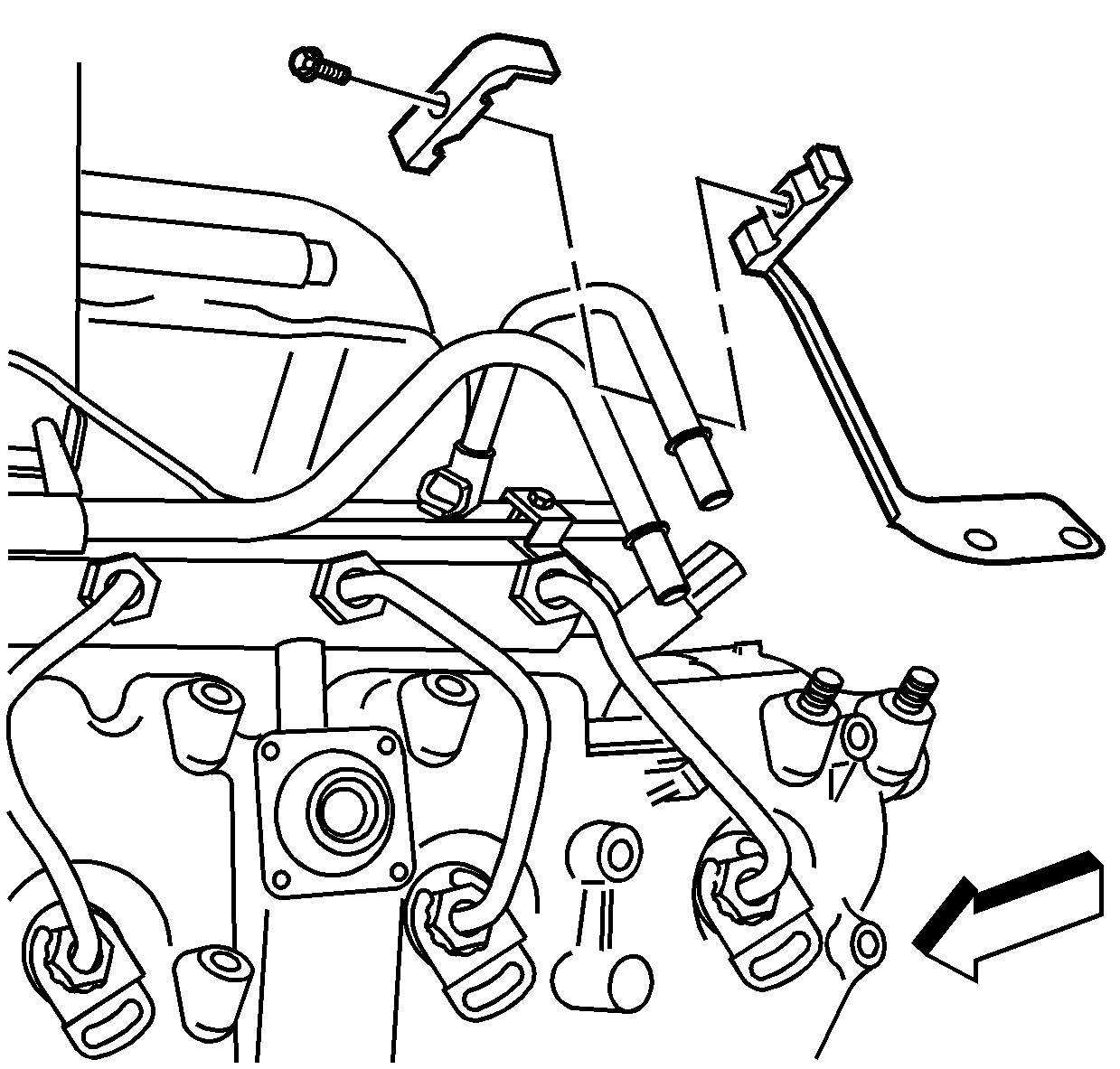
- Remove the fuel line retainers.
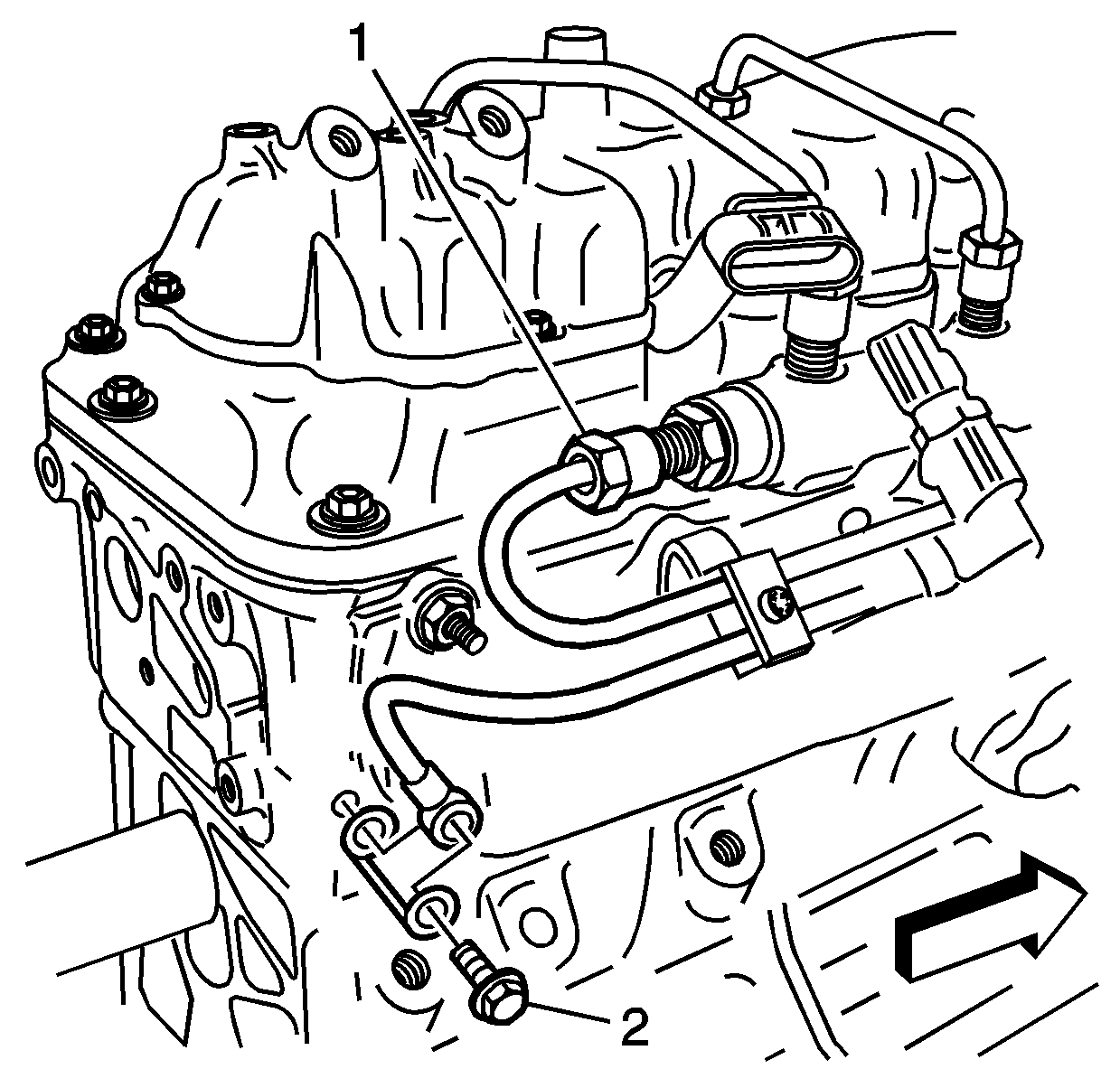
- Remove the banjo bolt (2) from
left rear cylinder head.
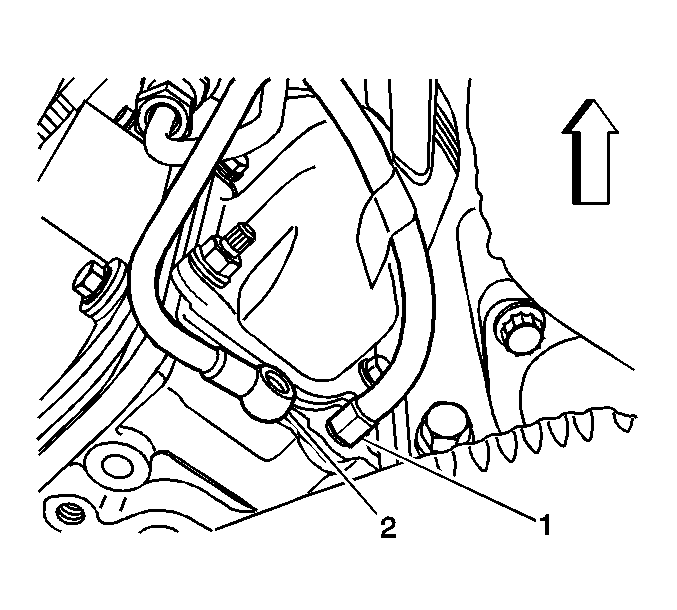
- Install the black hose (1) of the J 45873
to the left rear cylinder head and install the other end of the hose into
one of the J 45873 graduated cylinders.

- Remove the banjo bolt (3) from
the leak-off block.

- Install the other black hose (1) of the
J 45873 to the leak--off block (2) and install the other end of
the hose into another J 45873 graduated cylinder.

- Remove the banjo bolt (4) from
the junction block (2).
- Crank the engine for 15 seconds while observing the fuel
pressure relief valve on the junction block for fuel leakage.
| • | If fuel is leaking from the fuel pressure relief valve, replace
the fuel pressure relief valve. Refer to Fuel Pressure Relief Valve Replacement. |
| • | If no fuel is leaking from the fuel pressure relief valve, go
to step 27. |
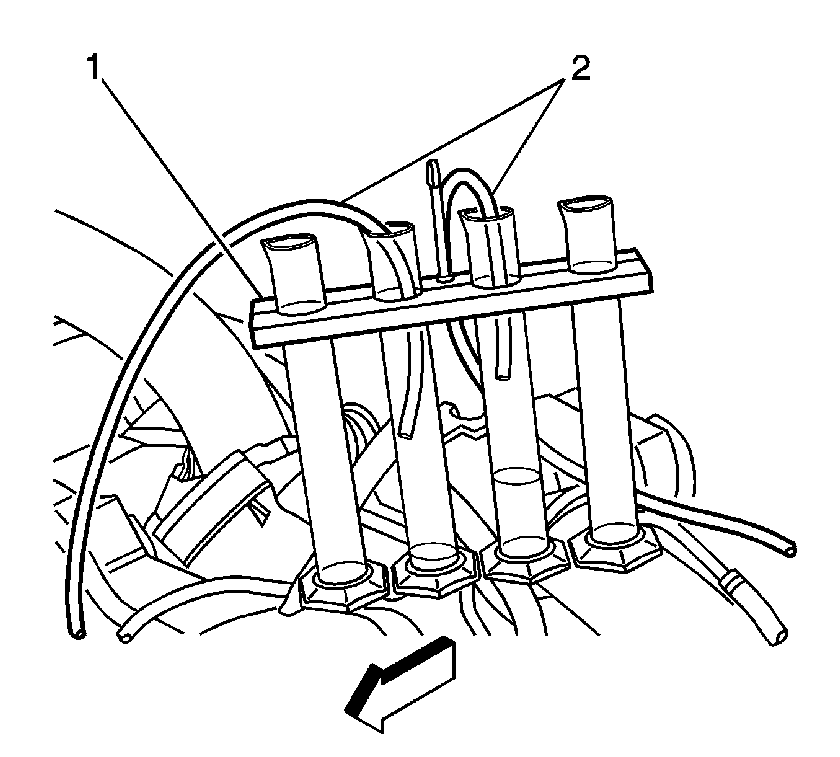
- Crank the engine in 15 second
intervals, with one minute cooling time between, until fuel starts to flow
into one or both of the J 45873 graduated cylinders (1).
- Elevate the hoses (2) to retain the fuel in the hoses, and empty
the graduated cylinders into a suitable container.
- Install the hoses (2) into 2 of the graduated cylinders (1).
Important: The engine cranking speed must be more than 150 RPM.
- Crank the engine for 15 seconds.
- Measure the quantity of fuel in each of the graduated cylinders.
If there is a difference of 10 ml or more between the
2 cylinders, remove the valve cover from the bank with the higher volume.
Refer to Valve Rocker Arm Cover Replacement-Lower Left or Valve Rocker Arm
Cover Replacement-Lower Right. Go to Step 32.
If the 2 cylinders
are within 10 ml, perform steps 32 through 42 on BOTH banks.
Important: When the fuel injector pressure lines are removed, debris will fall
into the fuel injector inlet fitting. Vacuum the debris from the inlet fitting
of the fuel injector.
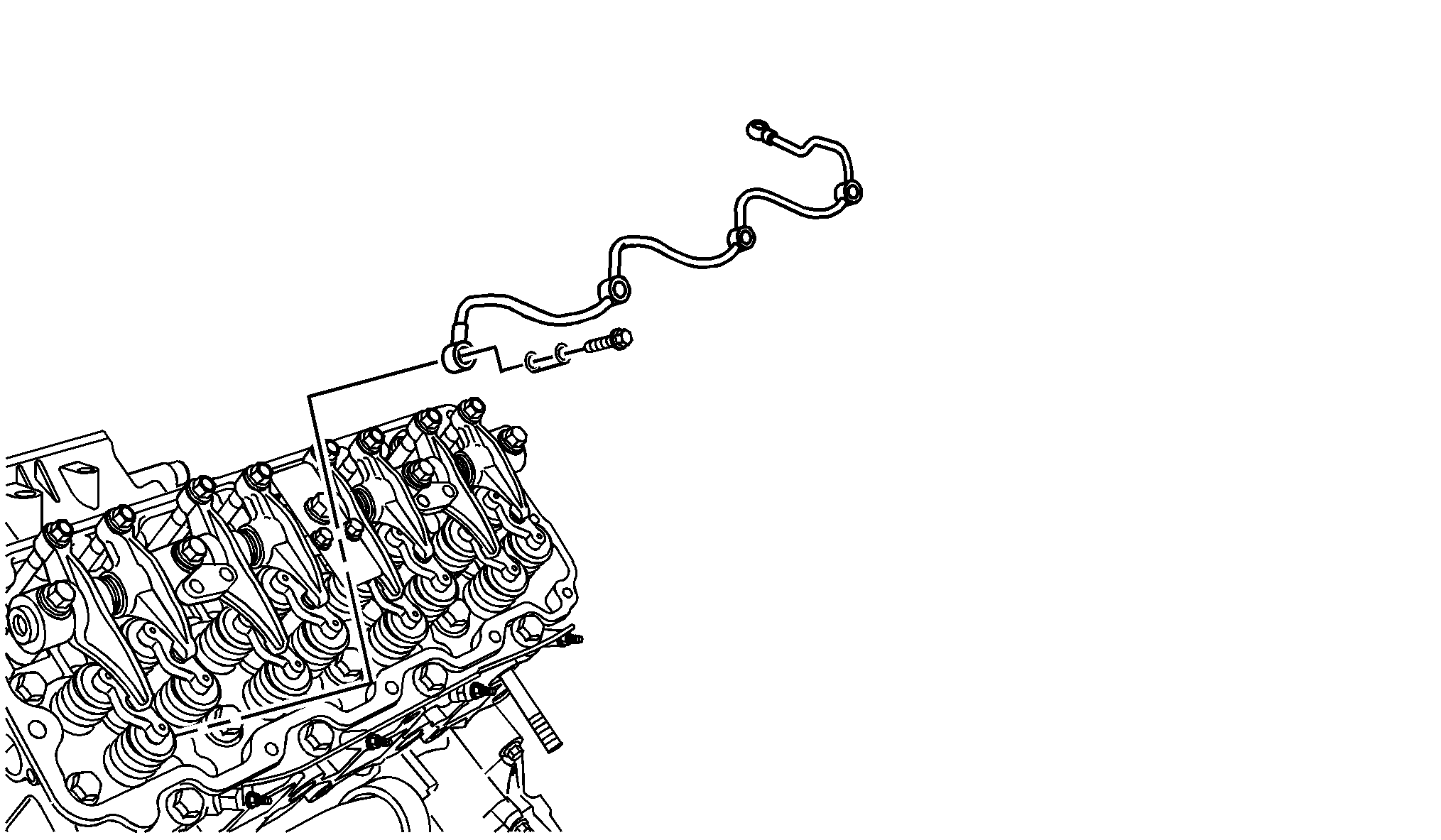
- Remove the return line from injectors.
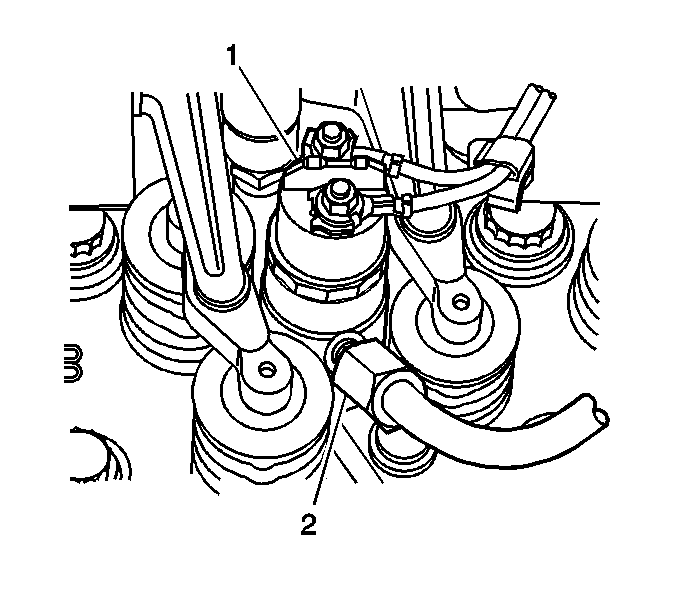
- Install the four yellow hoses (2)
from the J 45873 to the injectors (1) and the other end of the
hoses into each of the J 45873 graduated cylinders.
- Install the four injector supply lines.
Tighten
Tighten the supply lines to 44 N·m (32 lb ft).
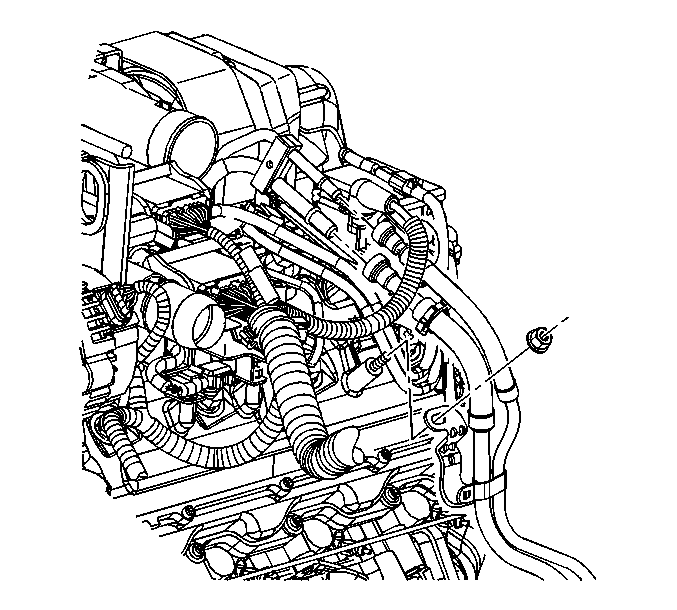
- Install the fuel supply hose. Push the
hose in until it locks.
- Install the black hoses from the J 45873 into the same
container that the fuel injection pump return hose is in.
Prime
the fuel system 30 times to remove air from the fuel system. Air will be forced
out of the system within 2 minutes.
- Crank the engine in 15 second intervals, with one minute
cooling time between, until fuel starts to flow into one or more of the graduated
cylinders.
- Elevate the four hoses to retain the fuel in the hoses, and empty
the 4 graduated cylinders into a suitable container.
- Install the hoses in the graduated cylinders in numerical order.
Important: The engine cranking speed must be more than 150 RPM.
- Crank the engine for 15 seconds.
- Measure the quantity of fuel in each of the graduated cylinders.
| • | If there is more than 4 ml of fuel flow from any fuel injector(s),
replace the high flowing fuel injector(s). Refer to Fuel Injector Replacement.
After the replacement, go to step 42. |
| • | If no fuel injector has a flow of more than 4 ml, install
the valve cover. Refer to Valve Rocker Arm Cover Replacement-Lower Left or
Valve Rocker Arm Cover Replacement-Lower Right. After installing the valve
covers, go to step 43. |
- Repeat steps 36 through 41 until no fuel injectors have
more than 4 ml of fuel flow.
- Were both banks of fuel injectors tested with steps 36
through 42?
| • | If the answer is YES, go to step 52. |
| • | If the answer is NO, go to step 44. |
- Reassemble the fuel return line and valve cover. Refer to applicable
procedures.
- Ensure that the hoses are still installed as they were in steps 22
through 25.
- Prime the fuel system 30 times to remove the air from the
fuel system. Air will be forced out of the system within 2 minutes.

- Crank the engine in 15 second
intervals, with one minute cooling time between, until fuel starts to flow
into one or both of the J 45873 graduated cylinders (1).
- Elevate the hoses (2) to retain the fuel in the hoses, and empty
the graduated cylinders into a suitable container.
- Install the hoses (2) into 2 of the graduated cylinders (1).
Important: The engine cranking speed must be more than 150 RPM.
- Crank the engine for 15 seconds while observing the fuel pressure
relief valve for fuel leaks. If the relief valve leaks, replace the relief
valve and repeat steps 47 through 50.
- Measure the quantity of fuel in each of the graduated cylinders.
If there is more than 16 ml of fuel in either of the 2
cylinders, perform steps 36 through 42 on the bank of fuel injectors
with the high fuel flow, Then go to step 52.
If both of the cylinder
have less than 16 ml of fuel, go to step 52.
- Install all disconnected and removed components. Refer to the
applicable procedures.
- Start and idle the engine. You may have to prime the fuel system
before the engine will start.
- Connect a scan tool.
- Command the fuel pressure control to 160 MPa with a scan
tool.
| • | If the fuel pressure is more than 145 MPa, the system is
OK. |
| • | If the fuel pressure is unable to increase to more than 145 MPa,
replace the fuel injection pump. Refer to Fuel Injection Pump Replacement. |



















